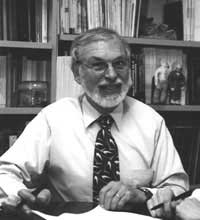For Immediate Release: June 15, 2001
Contact: Office of Public Affairs
(603) 646-3661
Print Version
Nationwide PTSD Study Begins This Summer
In an effort to help doctors treat posttraumatic stress disorder (PTSD) more effectively, two Department of Veterans Affairs researchers and Dartmouth Medical School professors are leading a nationwide psychotherapy research study they believe is the largest study of its kind.

|
|
Paula Schnurr |
The VA/Dartmouth principal investigators are Professors of Psychiatry Paula Schnurr and Matthew Friedman and their Dept. of Defense (DOD) colleague Lt. Col. Charles Engel, Chief, Deployment Health Clinical Center at the Walter Reed Army Medical Center in Washington, D.C.
PTSD results when a person cannot cope psychologically with a painful, frightful or alarming experience. This new study will focus on the treatment method known as prolonged exposure where the therapist leads the patient through a vivid memory of a traumatic event until the patient no longer experiences a strong emotional response. This method currently is not widely used for treating PTSD but has shown promise in clinical trials. The established mainstream therapy, called present centered therapy, focuses on current problems while avoiding discussion of the traumatic event.
The five-year study, titled "Cognitive-Behavioral Therapy for Treatment of PTSD in Women," begins July 1, 2001, and it will focus on military women.
The study is headquartered at the VA National Center for PTSD at the Veterans Affairs Medical Center in White River Junction, Vt., where Friedman is the Executive Director and Schnurr is the Deputy Director. The study is sponsored by the Department of Veterans Affairs Cooperative Studies Program and is also supported by the Department of Defense (DOD), with 13 VA Medical Centers and one DOD Medical Center participating. The budget is $5 million for the 5-year duration of the study.

|
|
Matthew Friedman |
"Even at facilities that have special programs for women, it would not be possible to obtain enough women at a single site to attain acceptable statistical power during a reasonable time frame," said Schnurr. The study will incorporate data from 12 sites across the United States and will include 48 therapists and 384 patients. The broad sample will come much closer to approximating clinical practice conditions nationwide than the existing single-site trials.
PTSD is an affliction most people associate with veterans and their frightening flashbacks of war, and, while it’s true that war veterans do suffer the highest rates of the disorder, civilians are afflicted as well. More than 10 million Americans will face PTSD at some point in their lives. The disorder manifests itself differently in individuals, but symptoms often include depression, substance abuse, psychosocial impairment, poor physical health and general functional difficulties, including other anxiety disorders. For women, the trauma most often involves sexual assault or rape; but other distressing events including (but not limited to) physical assault, accidents, natural disasters and war-zone events can also contribute to mental distress.
Once a patient is accepted into the study, she will be randomly assigned to one of two treatments, either prolonged exposure or present centered therapy. The patient will then receive the assigned treatment weekly for 10 weeks. Patient evaluations take place before treatment, directly after treatment and again at three and six months following treatment. The data gathered will reveal which of the two treatments is most effective, not only to treat PTSD, but also to treat the anxiety disorders and functional difficulties often associated with the illness.
The causes of PTSD may vary to some degree between military personnel and civilians, but the debilitating effects are often the same, so both populations can benefit from similar treatments, according to Schnurr, Friedman and Engel.
Ultimately, Schnurr, Friedman and Engel hope clinicians, researchers and policymakers across the United States and internationally will be able to use the findings to best treat patients and develop future research to help those suffering from PTSD.
- Anna Van Meter '01 and Susan Knapp